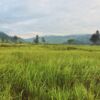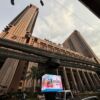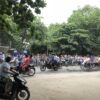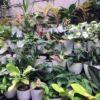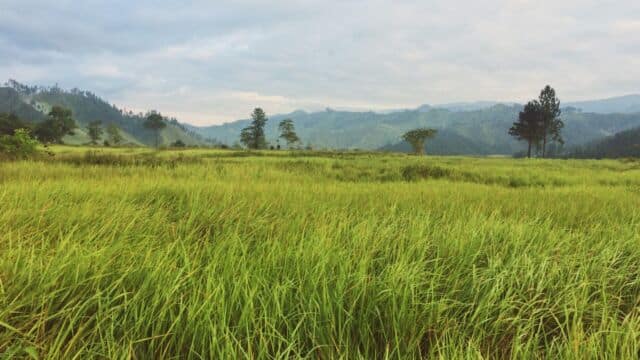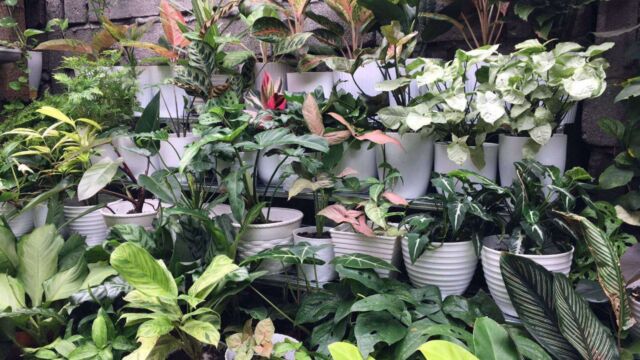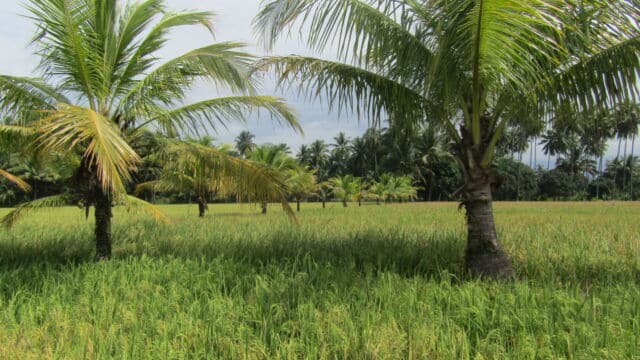San Miguel’s Angels Are Sleeping on the Job
Photo: Kyle Yunting
San Miguel, Zamboanga del Sur | 3,679 words
A sagging tarpaulin sheet on the side of the road proclaiming in bold, waterlogged letters, WELCOME TO THE MUNICIPALITY OF SAN MIGUEL! is all that warns you that you’ve arrived in my hometown. It doesn’t tell you much, really, because there are six other municipalities named San Miguel across the archipelago. The sign offers no further elaboration, but I suppose we can’t all be welcomed to Bacolod, City of Smiles, or Baguio, Summer Capital of the Philippines, or Tacloban, Home of the Happiest People in the World.
Say what you will about San Miguel, but, at the very least, it is honest with you right from the start. Welcome to San Miguel! That’s it. No superlatives, no exaggerated promises about our happiness or how our delicacies are the best in the world. We’ll throw in an exclamation point at the end if that’ll get you going, but if you expect anything more than that, you’ll only have yourself to blame.
The sign is a ten-minute drive from the house where I spent the first years of my life. The house sits in the middle of San Miguel’s poblacion, on what could be very loosely defined as its commercial hub. When I was a child, our street boasted a bakery, two schools and a side-street market that sold fresh meat every Sunday—which was more than most other streets could brag about, though it wasn’t enough to spare us from crushing small-town ennui. There was nothing to do but chores, and when the chores were done, there was nothing to do but sleep. On any given day in San Miguel, my entire street would be boarded up and in bed by eight o’clock.
Returning a decade and a half later, I find that the bakery is gone, replaced by a school supply store. The sari-sari store where I used to buy noontime snacks is now a computer shop. The bitumen road, which once stopped unceremoniously ten meters before our house, has crept forward and now stops unceremoniously ten meters past it. The sweeping rambutan tree that once stood sentinel by our gate was uprooted during renovations to the house.
New paint on old walls, new wrinkles on old faces, new children playing on the grassy yard of the parish church of Our Lady of Lourdes, guarded by stone angels wielding swords. I walk past it all. I visit San Miguel only a handful of times a year, to see distant family who I lose more and more of each year. Eventually, I know, there will be no more reason to make the two-hour drive from my current town, nothing else to come back to.
Except the spring.
Despite the years that separate me from my childhood, I find that everything is still familiar, if slightly altered at the edges, like an old toy found at the bottom of a drawer, its painted features rubbed off by wear and time. It’s still that place of sunny afternoons, playing house with my baby brother under the rambutan tree and laughing as my grandfather lifted me up to the sky, not knowing it would be the last time he’d be able to carry me.
In my neighborhood, as with everywhere else in town, the same unpaved dirt roads fork away in a dozen different directions. The crumbling outdoor stage—only ever used for earnest, if lackluster, attempts at a street-wide Christmas party—is still there at the end of the bitumen road, with barangay officials’ names from a decade ago stenciled into the wall, and the same old faces peer curiously out windows as I take the muddy path past an old basketball court.
The day my family moved out of San Miguel, one of my playmates took me by the hand and said, “You’re so lucky.” That’s how it was usually phrased—to me, to a friend who would move to Canada a few years after me, to an old teacher that retired to the city with her grandchildren. We were the lucky ones. Luck, in San Miguel, was measured by how far you could get away from it. Your survival depended on getting out. Well-paying work and good healthcare were limited to bigger towns and the cities; it was why my father worked two hours away and could only see us on weekends, and why my mother had to give birth to me in another region entirely.
San Miguel was a hole in the world. No matter what happened to us here—flood or war or local political infighting—you would never see it on the news. There were always bigger stories happening in bigger places.
My playmate told me I was lucky, because my mother had to work abroad to afford the life she thought her children deserved. Lucky because it meant we were to move in with my father’s side of the family in a town with an actual grocery store, a hospital and politicians with enough tact to keep corruption behind closed doors. Lucky because I was getting out.
I see her as I walk past her parents’ house, right on the edge of the forest. She’s sitting on the front stoop with her elbows on her knees, looking into the distance, and I can almost imagine calling out to her and asking if she wants to play tag. But then laughter explodes somewhere around the corner, and her two young children burst out from the coconut trees behind her house.
She yells at them to be careful. I duck my head and keep walking.
The forest is up ahead, an explosion of endless green. The trail begins to slant upwards. Trees now grow in place of houses. The noise of the town—what little of it there is—fades, and it is in this complete quiet that I understand how easy it is to disappear in places like this.
*
It was a decade into the regime of Ferdinand Marcos, Sr., the night was cold and there was a dead body in the street.
My mother tells the story in starts and stops, sometimes breaking off into discordant laughter. “It was unfortunate,” she says, eyes trained on her bedroom ceiling as if she could still see the decades-old memory playing out across the cracked plaster. “He was a good man, you know. A religious sort.” She pauses for a moment, hands pressed flat against her belly, and then she confesses, “We could hear them screaming for help.”
The shooting had happened right next door to our old family home. My mother—then a young girl of about ten or eleven—was crouched low on the living room floor with her siblings, watching as my grandfather started to make his way outside. My grandmother blocked his way. Was he trying to get himself killed, she asked. She threw her whole weight against the door even as my grandfather tried to wrench it open. My grandmother won, in the end. As my mother would find out later, this might well have saved my grandfather’s life, because the shooter had loitered around the street even as the good, church-going neighbor bled out and his family wailed for someone to come help them.
In those days, the culprit could have been anybody. It could have been your run-of-the-mill tulisan or a hold-up gone awry. Or—as my mother fervently accuses—a member of the New People’s Army, which had an encampment in my hometown at the time. They would often come down from the mountains, going door to door with solicitation letters that were, in truth, just a list of demands: soap, canned goods, bags of rice, clean underwear. My grandmother, the owner of a meager sari-sari store, fearfully complied as best as she could.
Telling me of their murdered neighbor, my mother shrugs and says, “Maybe he couldn’t keep up with their demands anymore.”
As she ends the story, I cannot help but be a little skeptical of its veracity. It’s not a question of my mother’s character, but of my hometown’s. It is hard to imagine that the quiet mountainside municipality of my childhood could be the setting of such violence—or, truthfully, that it could be the setting of anything. Because it isn’t accurate to say I thought nothing bad ever happens in San Miguel, Zamboanga del Sur. I was simply under the impression that nothing ever happens in San Miguel, Zamboanga del Sur. Nothing at all.
*
When I was younger, I was always told not to play hide-and-seek past six o’clock, because children who hide at night would never be found again. As I grew older, I came to see that it was just part of a parent’s gambit to get us home before sundown—a ruse that worked especially well on a child whose whole world was diametrically divided between saints and monsters under the bed.
Finish your dinner, or your hungry soul will wander out of your body while you’re asleep and get trapped inside the rice cooker forever. Pray before bed, or the devil will get you in your sleep. Don’t wander into the forest alone. You’ll never walk back out.
It took me a long while to realize maybe our parents didn’t need to invent anything. The monsters have always been here.
*
If I write about cities or towns, it’s in vague, one-size-fits-all terms. But whenever I write about forests, I always write about this one: the slow slope upwards, the muddy ground still marked by bare feet and carabao hooves, the rocks digging into my soles.
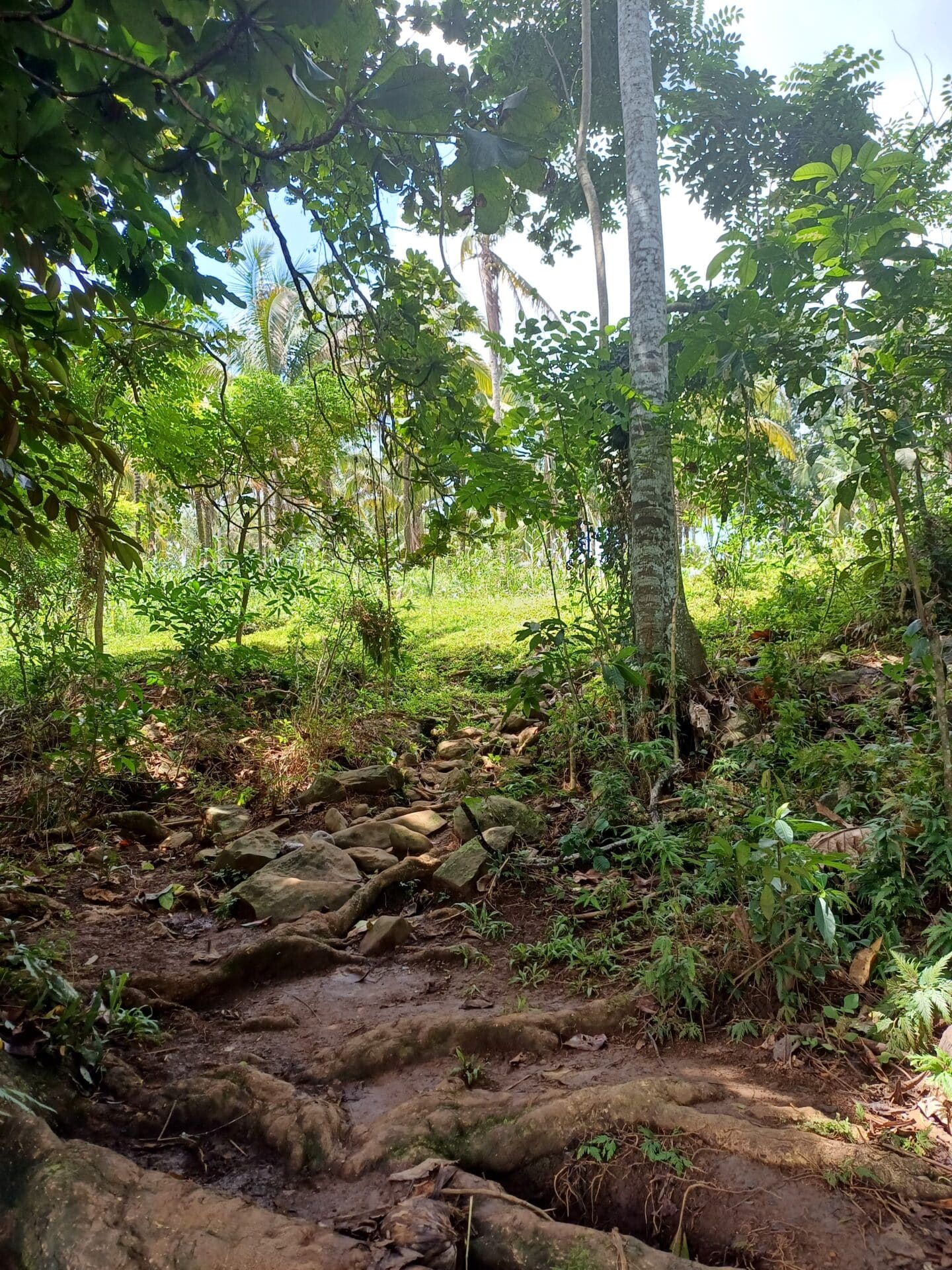
To the left of the path I’m on, breaking up the monotony of trees, is a field of small yellow flowers, crawling up the side of the mountain. They almost look out of place, a burst of radically different color among the infinite green. The legend goes that a funeral procession had accidentally dropped their dead here, and continued on without him to the cemetery just over the hill. His decomposing body, it was said, fed the flower field where a baby goat now grazes, nibbling contentedly on its leaves, unaware and uninterested in its macabre history.
To the right is a sprawling cornfield, stalks bowed by the weight of their fruit, trees on all sides. Above it is a clear view of a neighboring mountain range, cutting a jagged line between the earth and the sunless sky. From this vantage point, one can see the great brown spot at the top of a distant mountain that resulted from overzealous logging practices that have remained uncorrected since I was a child watching trucks heavy with pilfered logs trundle past our house. My grandfather once warned, ominously, that we would see this injustice returned to us one day.
In the hottest month of the first decade of the millennium, I thought that day had come. A harsh El Niño had wiped out the town’s water supply, forcing us to stockpile gallons imported from the neighboring city.
Or alternatively, the spring.
*
Right after telling me about one dead body, my mother tells me of another.
Our family home sits at the foot of the mountain, one of the last houses you pass before the path becomes an ascent. We would often visit distant relatives that lived higher up, hiking upwards for thirty minutes, carrying plastic baskets of cold drinks because the mountains didn’t get electricity for refrigerators. I remember darting ahead of my family, weaving between coconut trees, knowing when to walk carefully when passing the solitary nipa hut that didn’t leash their dogs, and eventually pausing by the stream where a carabao would be up to its nose in water. There, I would wait for my grandfather to catch up. When he saw me, he would smile and shift his basket onto his shoulder to reach a spare hand out to me, and we would cross the stream together.
There’s a bridge over that stream now, but I choose to remember the three boulders sticking out of the water which we used to rely on, precariously slippery. I remember jumping between them, fearless, because my grandfather was holding my hand and he would catch me if I fell.
I was never told, of course, what that same stream bore witness to decades before, because who has the heart to tell a child that the waters of their youth once ran red?
I am no longer a child, though, and so my mother spares no details when she tells me of how she once stood at the foot of the mountain, watching the soldiers coming out of the forest. San Miguel had become a battleground as the rebels and the military wrestled for control over the electric utility company that controlled the town’s power. A satellite branch happened to be right down the street from our family home. My mother laughs as she recounts night after night of jumping into the foxhole under her bed at the first crack of a gun, sometimes bearing a pot of rice from their interrupted dinner or an arinola for my grandmother, whose bowels—understandably—didn’t fare well with a gunfight happening right outside her garden.
As the Marcos regime cracked down harder on insurgency and the insurgents responded in kind, towns like San Miguel were forced to supplement their own defenses in the form of the now-defunct Integrated Civilian Home Defense Forces or CHDF. My mother’s grandfather—the man I knew mostly as the kyphotic figure on a rocking chair who used to press a five-peso coin into my hand before I went to school—was a member of San Miguel’s CHDF and often told my mother and her siblings to stay out of the military’s way.
“War is tricky,” he would say. “It won’t be the soldiers’ fault if you get caught in the crossfire.”
And so my mother kept her head down, did as she was told. She didn’t stop to play in the sprawling cornfields after school. She went straight home. If she hadn’t, if she’d indulged her playmates and shrugged off her second-hand school bag to tumble down the grassy knoll behind San Miguel Elementary School, she might have missed the procession of soldiers trailing mud down from the mountains. She might have missed the grim parade of tarp-covered military trucks, and she might have missed the grinning soldier who, upon seeing my mother staring by the side of the road, beckoned her over, lifted one of the tarps, and showed her the girl underneath.
“They said she was NPA,” my mother tells me. They’d found her in the cornfields right by the stream. “She tried to run from them. She didn’t get very far.”
The girl, she said, could not have been more than twelve years old.
San Miguel, they say, is so quiet that even angels can fall asleep here, their divine watch forgotten. Perhaps that is why such things are allowed to happen here. Our guardians are sleeping on the job.
But my father, hearing my mother’s story, is not surprised. “That happened in my hometown as well,” he says. “It was happening everywhere.”
Even in its tragedies, it seems, San Miguel is not special.
*
My grandfather was not always a violent man. My grandmother blames it on the anting-anting which, coincidentally, he only started collecting at the end of the first Marcos era. He showed only one to me, deep under the shade of the rambutan, the branches drooping low from the weight of the fruits, all ripe enough to burst out of their blood-red shells. The talisman was a yellowed tooth on a string.
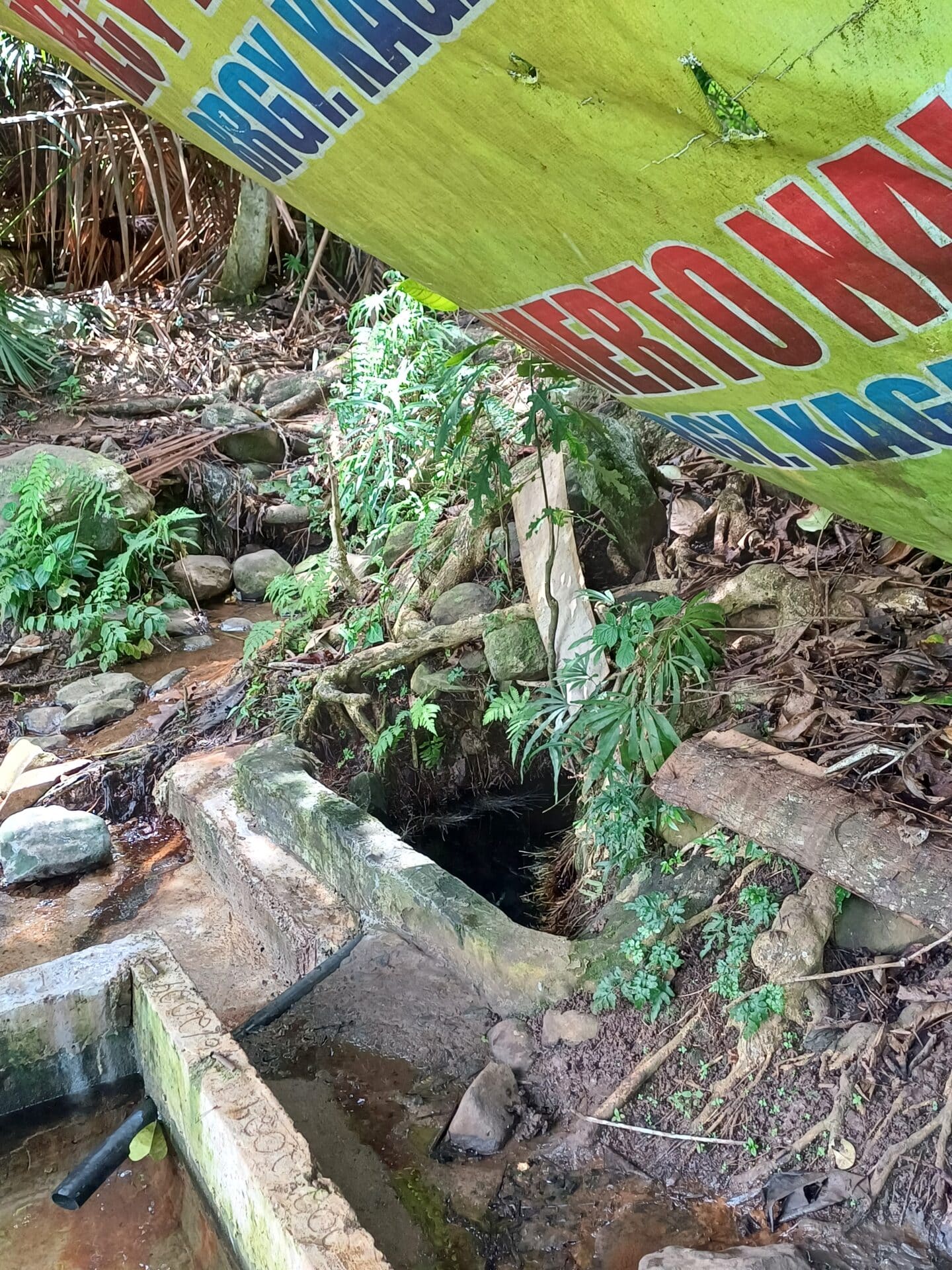
“This one makes you immune to bullets,” he said.
The anting-anting was what drove him to madness and cruelty, my grandmother says. San Miguel has no doctors to tell her otherwise, to sit her down and tell her what years of living next to gunfire does to a person’s mind. I don’t know if that would have made a difference to her, anyway. For the rest of my grandfather’s short and violent life, she prayed to San Miguel’s namesake to cure him.
“O merciful Archangel Michael, patron saint of military forces, deliver us from evil.”
*
In my memories, the spring is an uncompromising force, the water gurgling up from some unknown underground reserve and spilling out into the surface in branching streams that cut their own stubborn course across the forest floor, regardless of what stood in their path.
I remember making this same journey up the path with my family when our water supply ran low during the El Niño, all of us armed with plastic buckets and repurposed gallon-sized Datu Puti containers. We would walk past the houses, past the impossible field of yellow, past the old tree haunted by whatever creature scared all the kids off, and we would come to the spring to take our fill. There were often people lining up for spring water that year. Some had taken to bathing in its stream directly instead of lugging gallons downhill. My grandfather would call out to old friends and laugh loudly as he dipped our jug deep into the heart of the spring, elbows disappearing into the cold water. He would emerge with our toilet-flushing water for the week.
Now the process has been streamlined, so to speak. What once was a rushing torrent of water is now contained by a small, unremarkable well. Two-feet high cement walls box the water in, utterly stagnant. An old tarpaulin poster from a previous election campaign season is draped above the well as a makeshift canopy, forcing you to crouch low to avoid hitting the politician’s grinning face.
When I get here today, when I’m down beside the well, a discarded sachet of Palmolive crunching beneath my shoe, my knees digging into damp cement, I only need to look to my right to find what I came here for. The heart of the spring—a hole in the world, nestled between the roots of an old tree, feeding the well through a plastic pipe.
If the old stories are to be believed, all the water in this region comes from the same source: some nameless, mythical basin of water from which all lakes, rivers, streams and springs alike flow. The basin was said to lie at the base of an ancient tree, its roots holding the water like a child with cupped hands. If the tree ever fell, the whole region would be gone, consumed in an instant by a biblically world-ending flood.
It is, to me, a folkloric translation of the scientific fact that all the water on Earth is the same as it has always been, ever since it was brought here by ancient asteroids. In vain, it tries to leave again and it almost—almost—succeeds, taking to the sky as clouds for a brief moment of flight. But unfailingly, it comes back down. The cycle demands it return.
The same water feeds the rain, the murdered girl’s stream, my grandfather’s pulmonary edema as he lies alone on a stiff hospital bed, his lungs collapsing, a hundred kilometers from home, my grandmother’s flowers, my mother’s coffee cup as she tells me of her youth in a town she never wants to see again (“No, langga, not even if you asked me to, not even if it’s with you”), the wet mud beneath the soldiers’ feet and the cold spring beneath mine, decades later.
A crow wails somewhere up in the branches.
“Huh,” I say, to no one, “I remember this being bigger.”
*
Welcome to the Municipality of San Miguel, the sign says. We are always smaller than you remember us to be. But we raise our children well. They play, even now, in the same fields, by the same streams, and on the same streets where we mourned our murdered.
We sleep early. We love quietly. We’ve stopped being home to you, but we remember your name and tell you about how much taller you’ve gotten since you last visited. We tell you what’s been happening since you left. You didn’t miss much, but we missed you.
*
It is years into the presidency of Ferdinand “Bongbong” Marcos, Jr., the dead dictator’s son. The days are warm, and it has been fifteen years since I’ve lived in San Miguel. I visit sometimes, but that’s all I’ll ever be to it now—an occasional tourist to what once was home.
I have no reason to linger, really. My grandfather, my last real tie to the town, passed six years ago from an infection that could have been cured if he hadn’t found the four-hour trip to the hospital a chore. I’ll never get his side of things now. I’ll never get to ask him if it really was the dog’s-tooth necklace that made him so angry at everything, or what he thinks of the new community center that blares disco music down the street, or if he was ever sorry. I often wonder how many stories like his remain untold, unfinished, unasked for.
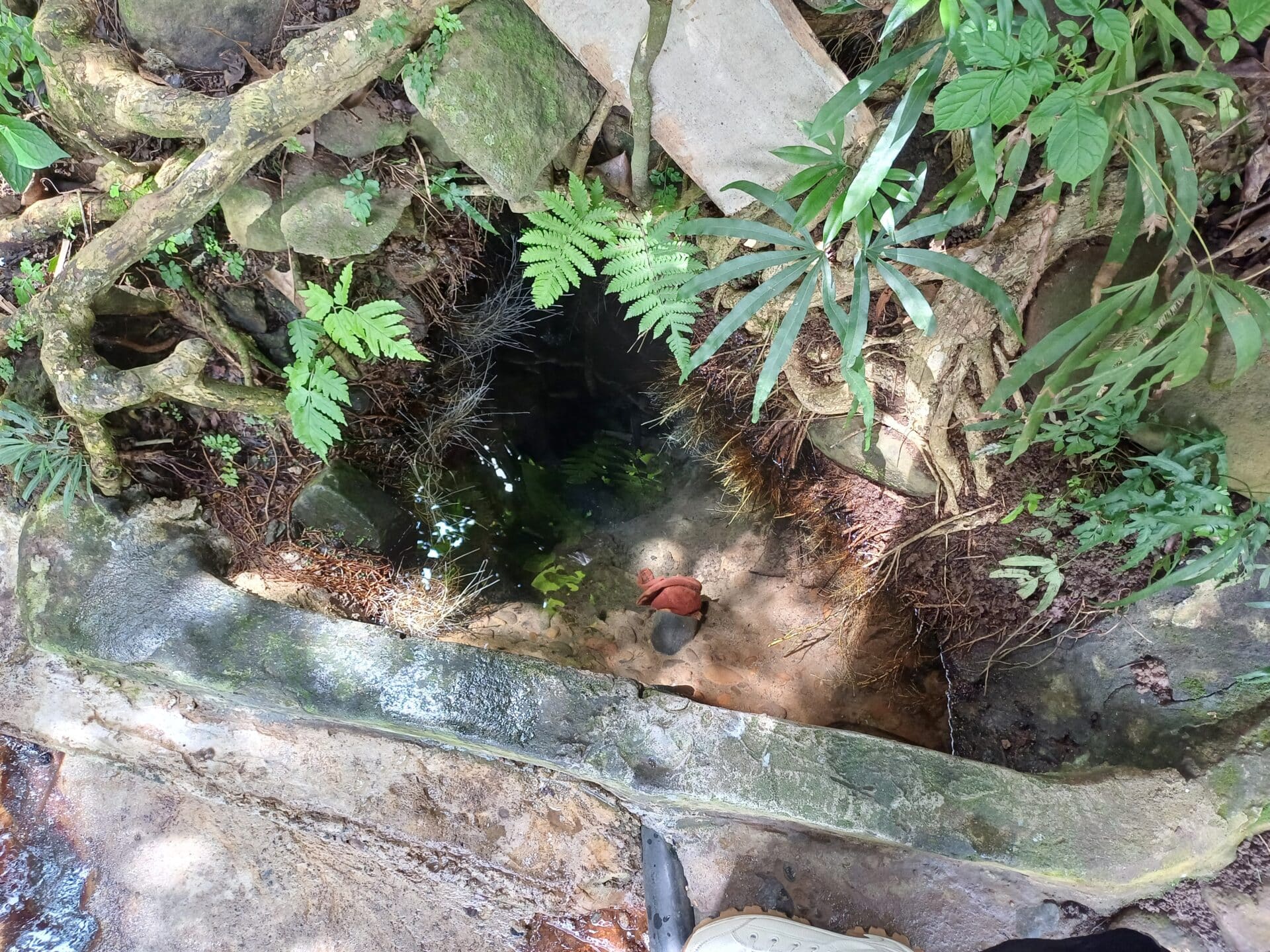
I’m asking now. I ask my mother to tell me her stories, even the ones that made her see ghosts or “white ladies” in every tree and made her teach her children to fear the night. I ask her about my grandparents, her grandparents, what it was like to be a young girl in a warzone. She laughs again, uneasily, and asks why I’m suddenly so interested. I tell her I just want to know.
“I never thought of San Miguel as somewhere anybody wanted to know about,” she says. But she tells me everything anyway. And then she ends, with one last laugh, “Do you remember the spring we used to visit?”
*
The storm breaks as I walk through the dead man’s flower field. The rainwater is punishing, lashing across my skin as I begin to run, and in between the louder-than-life thunderclaps, I can almost hear him laughing and telling me, “See? It always comes back around.”
By the time I make it out of the forest, the children have been called home, the gutters are overflowing, and San Miguel weathers it all.
© Kyle Yunting
Commissioning editor: John Bengan
